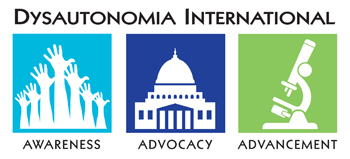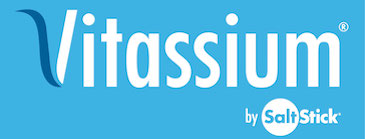There are many other forms of dysautonomia. Some are quite rare, such as Familial Dysautonomia, while others are fairly common, such as Diabetic Autonomic Neuropathy. The following links lead to additional information on some of the other known autonomic conditions. This is not an all-inclusive list.
Information from Dysautonomia International:
Neurocardiogenic Syncope/Vasovagal Syncope
Inappropriate Sinus Tachycardia
Pure Autonomic Failure
Autoimmune Autonomic Ganglionopathy
Multiple System Atrophy
Autonomic Dysreflexia
Autonomic Dysreflexia (AD) is a form of autonomic dysfunction associated with spinal cord injuries. Usually, when an AD attack occurs, there is an irritant impacting the person below the level of their spinal cord injury, and because their autonomic nervous system cannot process messages properly, this results in a severe spike in blood pressure, flushing above the spinal injury, nasal stuffiness and other symptoms. AD is serious and can lead to a stroke if not treated properly during an attack.
More information on AD from the Christopher & Dana Reeve Foundation
Baroreflex Failure
The baroreceptor reflex, or baroreflex, is one of the body's homeostatic mechanisms for maintaining blood pressure. If the baroreceptor itself or part of its messaging system fails, this is referred to as Baroreflex Failure. Patients often deal with normal or low resting blood pressure and very high or volatile blood pressure during periods of stress.
The Diagnosis and Treatment of Baroreflex Failure
Four Faces of Baroreflex Failure
Hypertension Grand Rounds-Baroreflex Failure
Baroreflex Failure - NIH Autonomic Disorders Consortium
Cerebral Salt Wasting Syndrome
Cerebral salt-wasting syndrome (CSWS) is a rare condition featuring hyponatremia and dehydration in response to a physical injury or the presence of tumors in or surrounding the brain. The hyponatraemia is due to excessive sodium excretion from the kidney resulting from a centrally mediated process.
Medscape Reference: Cerebral Salt-Wasting Syndrome
Journal Article
Diabetic Autonomic Neuropathy
Diabetic Autonomic Neuropathy is a secondary form of autonomic dysfunction, but it is likely the most common form of autonomic dysfunction in the world. An estimated 20% of all diabetics suffer from Diabetic Autonomic Neuropathy, which equates to approximately 69 million people worldwide. Diabetic Autonomic Neuropathy is a serious complication of diabetes. It is associated with an increased risk of cardiovascular mortality.
National Diabetes Information Clearinghouse
Research paper on diabetic autonomic neuropathy
Familial Dysautonomia
Familial Dysautonomia (FD) is an exceptionally rare genetic disorder seen almost entirely in persons of Ashkenazi Jewish descent. There are only about 350 people worldwide living with this disease. FD is very serious and is considered fatal, although with better treatments, patients are living longer than they did in the past. Please note, just because you have a form of dysautonomia that runs in your family, that does not mean you have Familial Dysautonomia. There are many more common forms of dysautonomia that run in families too, like POTS.
Dysautonomia Foundation, Inc.
FD Now
Faces and Voices of FD - an educational video on FD from the Dysautonomia Foundation, Inc.
The Dysautonomia Center
PubMed Health-Familial Dysautonomia
Panayiotopoulos Syndrome
Panayiotopoulos Syndrome is also known as Autonomic Epilepsy or Benign Childhood Autonomic Epilepsy. It is a fairly common childhood seizure disorder characterized by seizures, often prolonged, with predominantly autonomic symptoms, and by an EEG [electroencephalogram] that shows shifting and/or multiple foci, often with occipital predominance. The typical patient does not "convulse" as seen in grand mal seizures. The child is awake, able to speak and may vomit or feel like he is going to vomit. Sometimes the child is arisen from sleep during the seizure.
Panayiotopoulos Syndrome: A benign Childhood Epilepsy Frequently Imitating Encephalitis, Syncope, Migraine, Sleep Disorder or Gasroenteritis
Reflex Sympathetic Dystrophy (Complex Regional Pain Syndrome)
Reflex Sympathetic Dystrophy is an extremely painful neurological condition. Some doctors consider it a form of dysautonomia, while others don't.
National Institutes of Health, Complex Regional Pain Syndrome Information Page
Reflex Sympathetic Dystrophy Syndrome Association
| | |




